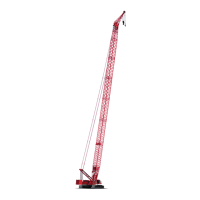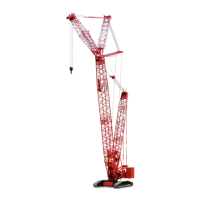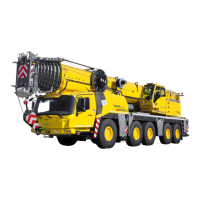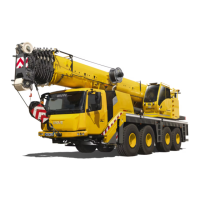National Crane 1-21-2019 Control # 104-07 8-9
1400A SERVICE MANUAL LUBRICATION
1400A Hydraulic Oil Reservoir Level
The hydraulic oil reservoir has a sight gauge located on the
side of the reservoir (Figure 8-6). The oil in the hydraulic
reservoir is sufficient when the level is between the upper
and lower marks on the sight gauge with the crane parked on
a level surface in the transport position and the oil cold.
If the oil level is too low, add the recommended hydraulic oil
until the oil level is even with the upper mark. If the oil level is
high, drain oil until the oil level is even with the upper mark.
WIRE ROPE LUBRICATION
Wire rope is lubricated during manufacture and the lubricant
applied does not last the life of the rope. The wire rope must
be lubricated as part of a regularly scheduled maintenance
program. The lubricant applied must be compatible with the
original lubricant and not hinder visual inspection of the rope.
Consult the rope manufacturer for proper lubricant. The
sections of rope which are located over sheaves or
otherwise hidden during inspection and maintenance
procedures require special attention.
The object of rope lubrication is to reduce internal friction and
to prevent corrosion. The type and amount of lubrication
applied during manufacture depends on the rope size, type,
and anticipated use. This lubrication provides the finished
rope with protection for a reasonable time if the rope is
stored under proper conditions. When the rope is put into
service, periodic applications of a suitable rope lubricant are
necessary. Characteristics of a good wire rope lubricant are
that it should be:
• free from acids and alkalis.
• have sufficient adhesive strength to remain on the rope.
• of a viscosity capable of penetrating the interstices
between wires and strands.
• not be soluble in the medium surrounding it under the
actual operating conditions (i.e. Water).
• have a high film strength.
• resistant to oxidation.
Before applying lubrication, accumulations of dirt or other
abrasive material should be removed from the rope. Clean
with a stiff wire brush and solvent, compressed air, or live
steam. Lubricate the rope immediately after the rope is
cleaned. Techniques that can be used include:
• bath
• dripping
• pouring
• swabbing
• painting
• pressure spray
Whenever possible, the lubricant should be applied at the
top of a bend in the rope, because at that point the strands
are spread by bending and are more easily penetrated.
There should be no load on the rope while it is being
lubricated. The service life of wire rope is directly
proportional to the effectiveness of the method used and
amount of lubricant that reaches the working parts of the
rope.
Fill Between
Marks
FIGURE 8-6
Fo
r
Reference
Only
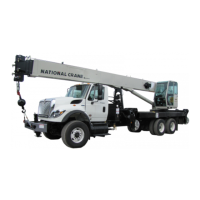
